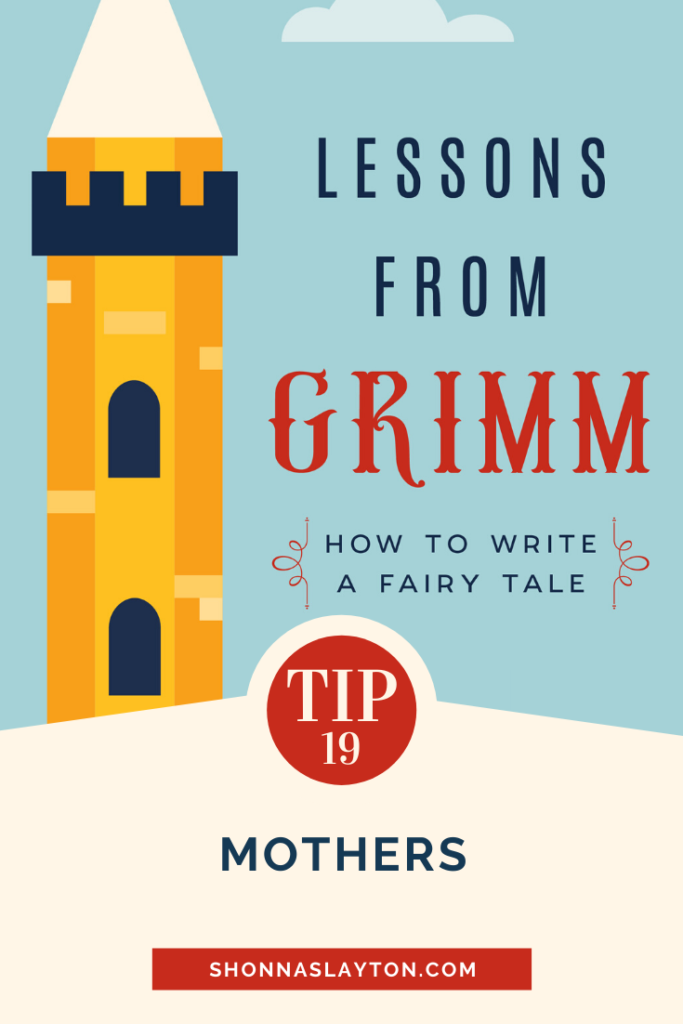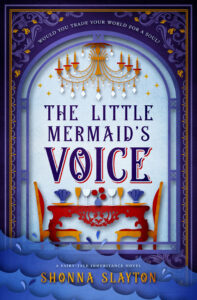Just in time for Mother’s Day, the set of stories this week provides us with another story about a mother and a stolen child.
What are the mothers like in Grimm’s fairy tales?
So far in our readings, we have been introduced to evil stepmothers, barren mothers, and sleeping mothers. (Sometimes all in the same story.)
And the mother-in-laws! Have we read about a good one yet? They never seem to like their son’s choice of bride.
Seems like it’s time to start a list of mother tropes in fairy tales:
Evil Stepmothers
Oh, these mothers are full of plotting! They have plans and don’t care if they have to do something evil to make things happen. Although, they do try to distance themselves from the deed by commanding huntsmen to take care of business for them.
These stepmothers are often jealous for their own biological children and act in ways to help them get ahead. Usually by trying to kill their stepchildren and have their child take their place.
Exceptions: Snow White (the stepmother has no other children) and Cinderella (the stepmother doesn’t try to kill the stepchild as she finds her useful as a servant.)
Barren /Praying Mothers
These mothers begin the fairy tale praying that they will have children. Unfortunately, after having their prayers answered with a child, these mother also often die shortly after their miracle births, giving way for an evil stepmother (see above.)
Exceptions: Sleeping Beauty; the mother lives, while her child “dies” in a sense. Also, this week’s story, The Pink, the mother lives, though banished, and most likely thinks her child is dead.
Sleeping Mothers
Let’s face it. Mothers of babies are often so exhausted that when they do get sleep, it can be a deep sleep.
Deep enough that an evil cook can come along and steal her child and make it look like it was eaten by a wild animal. As in the case of this week’s story, The Pink.

In The Pink, the tired mother falls asleep in the garden “where the wild animals are kept.” (Was she so tired she forgot this was a dangerous garden?) The child is in her lap when the cook comes along and sees his opportunity. The child is special, you see, as he has the power of wishing: whatever he wishes for happens.
However, it’s not enough for the cook to take the child. He smears chicken blood on the mother’s apron to make it look like a wild animal killed him. That way, no one will search for the child. (Similar events have happened in other stories we’ve read and I’m not sure why this is a thing. A warning for mothers to keep an eye on their children playing outside perhaps?)
To add insult to injury, the cook makes it out that the mother was a terrible mother for allowing this to happen. The king agrees and banishes his wife to be sealed up in a tower for seven years. Oh dear. At least she wasn’t ordered burned at the stake as in a past story!
Good active parents (mothers in particular?) are rare in stories because they tend to get in the way of young protagonists solving their own problems. Mothers do like to offer guidance! I’m curious to see what other kinds of mothers show up as we continue reading through Grimm this year.




